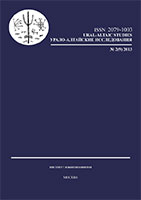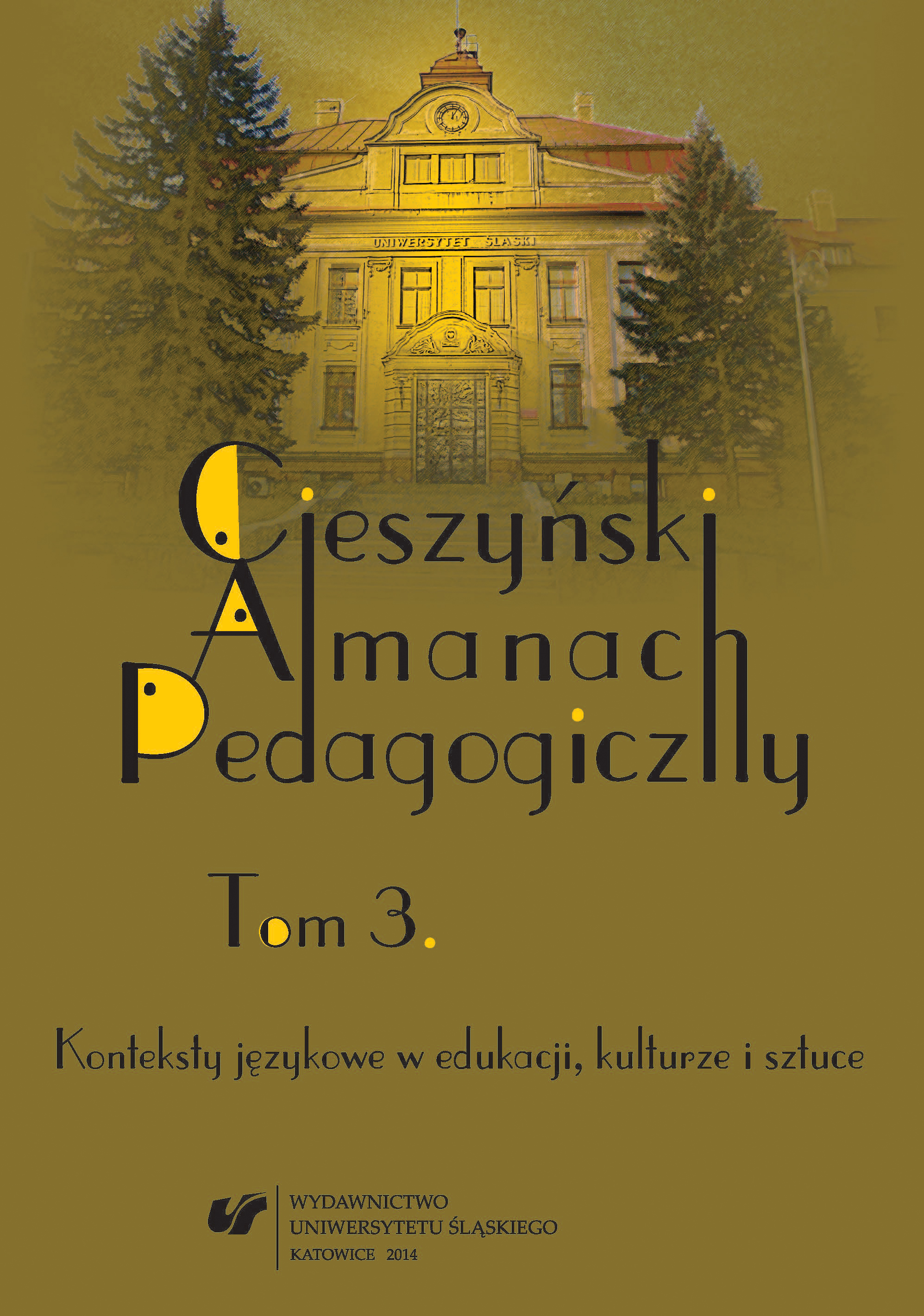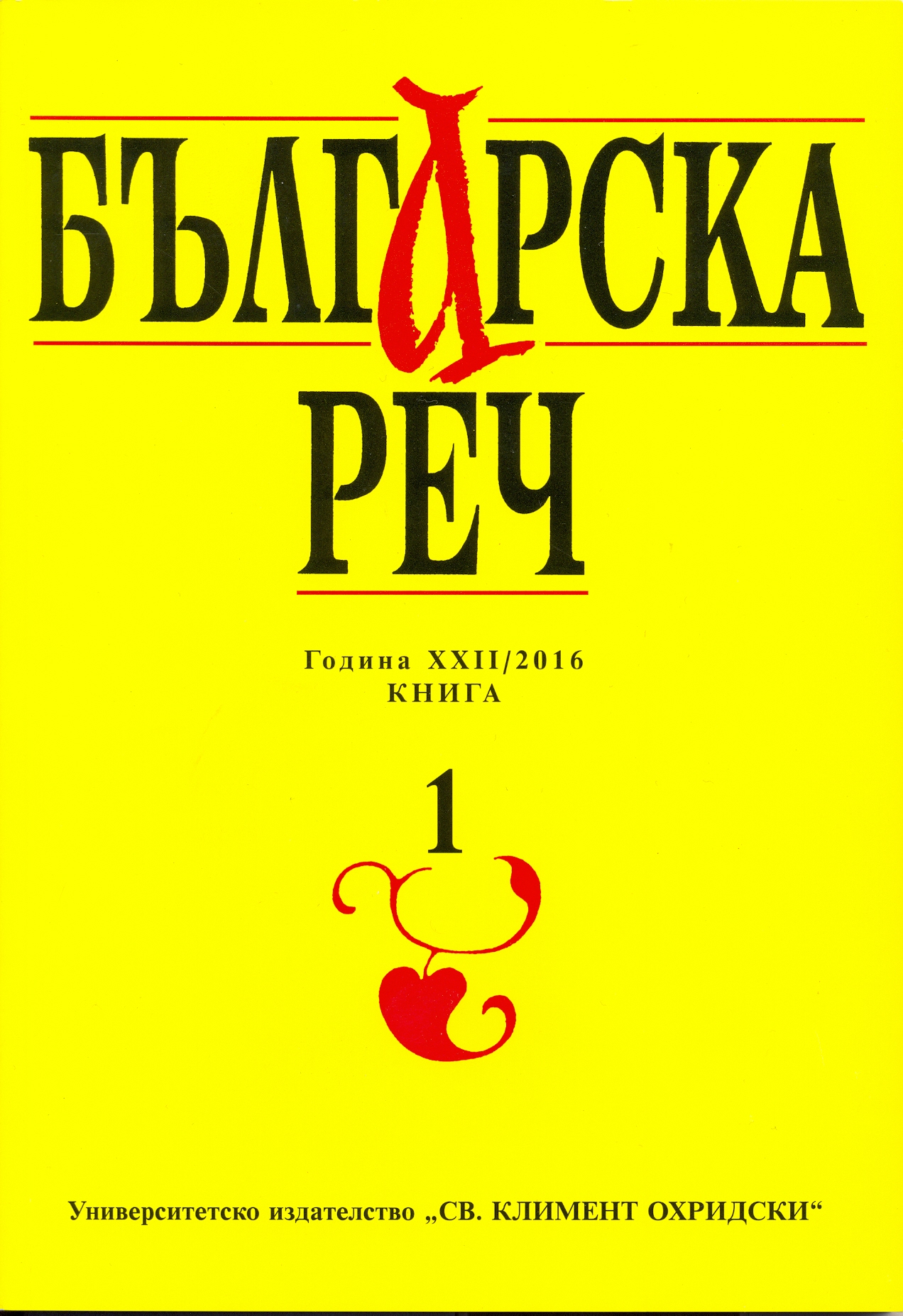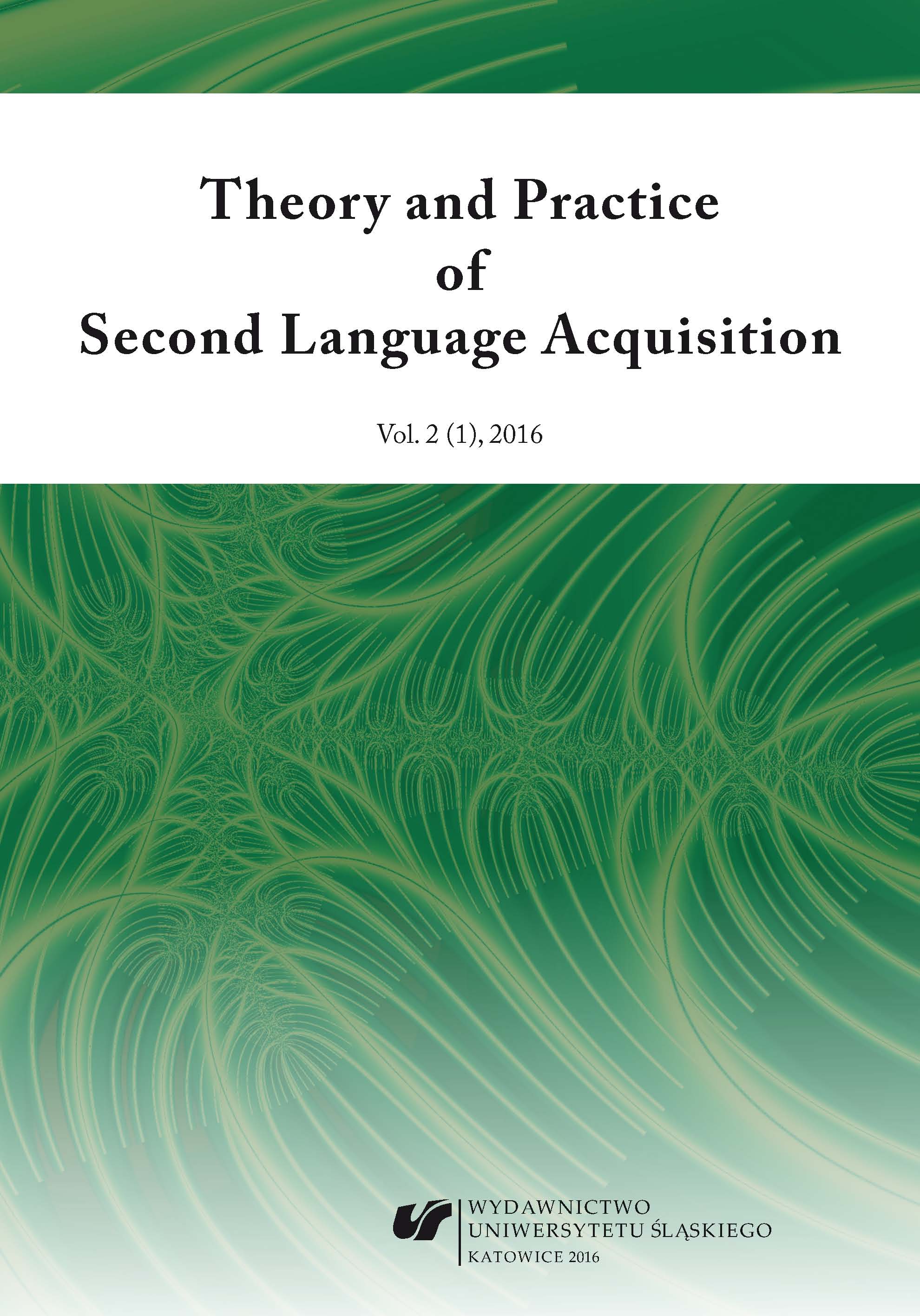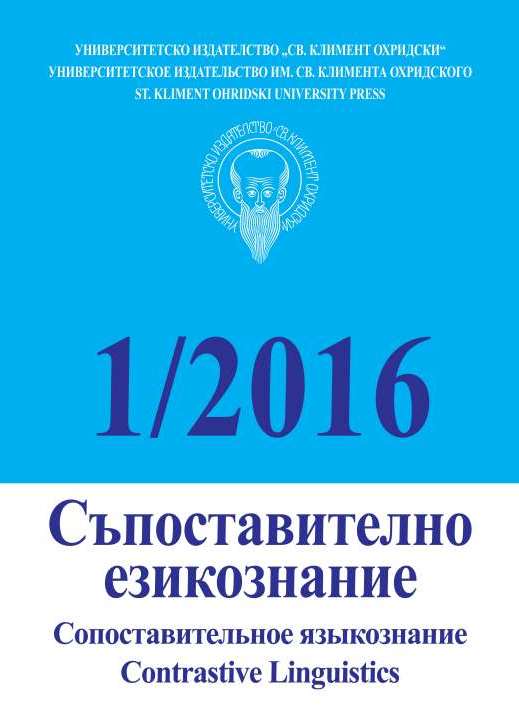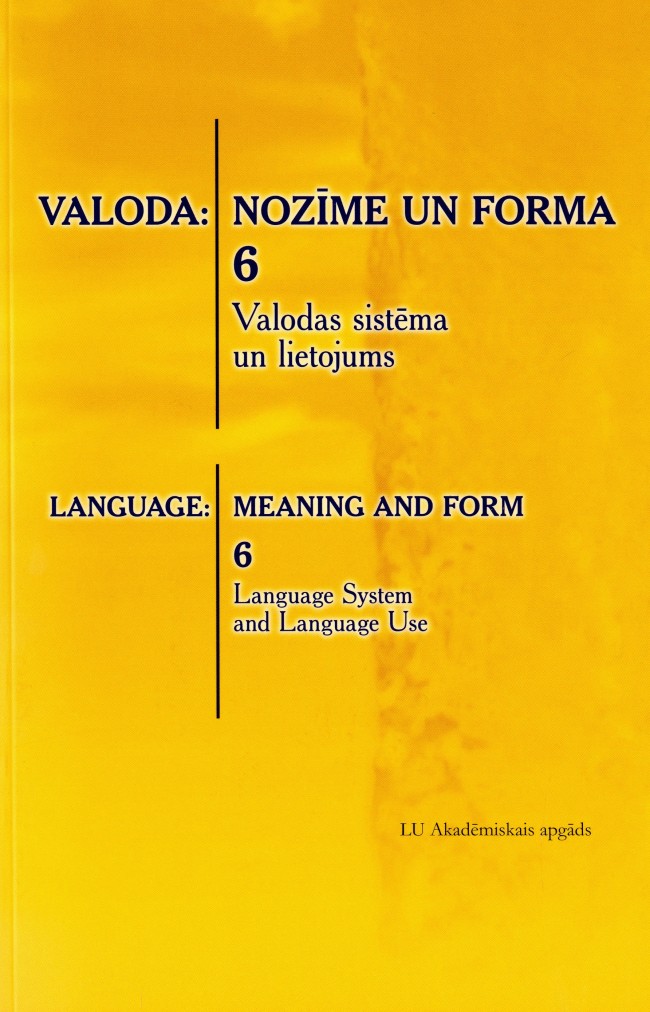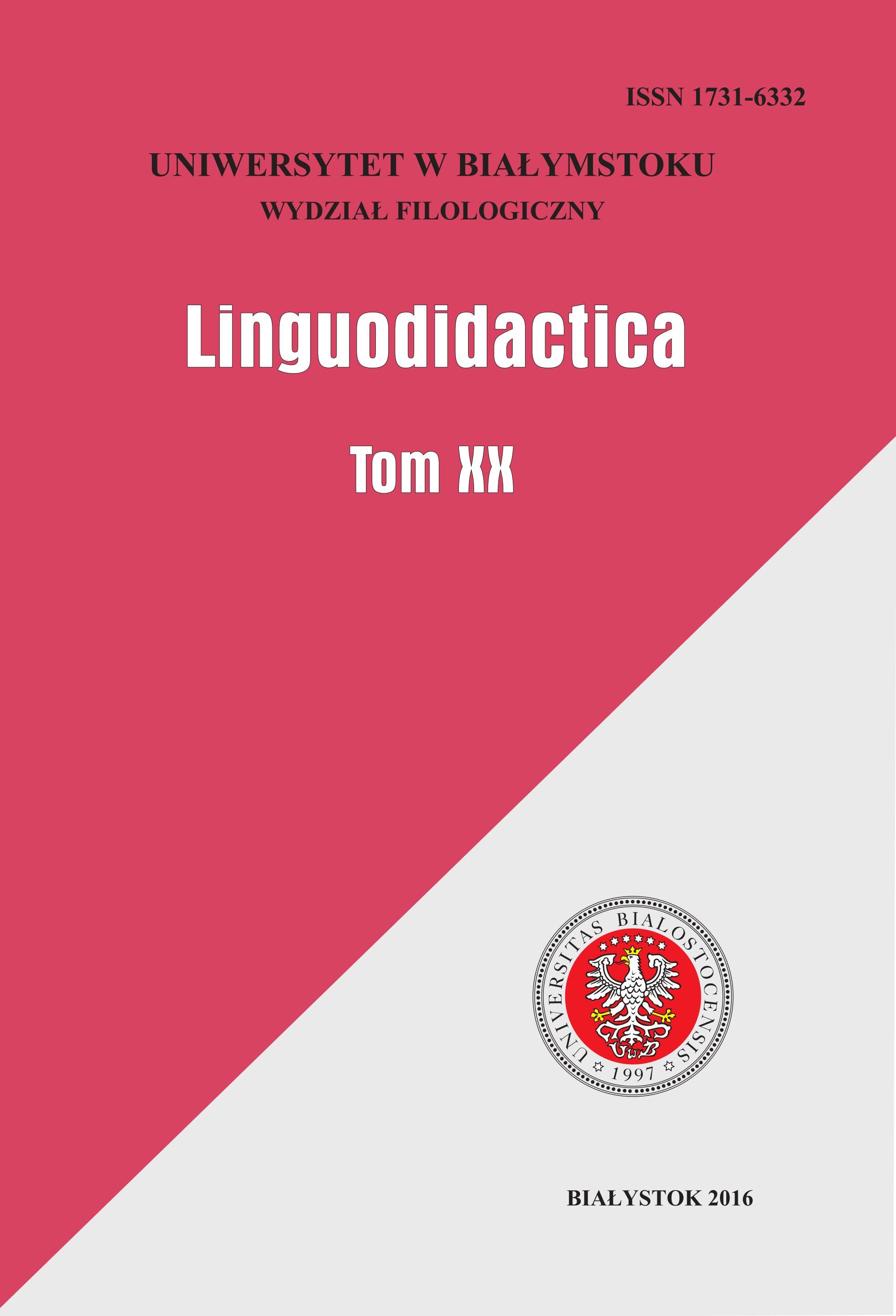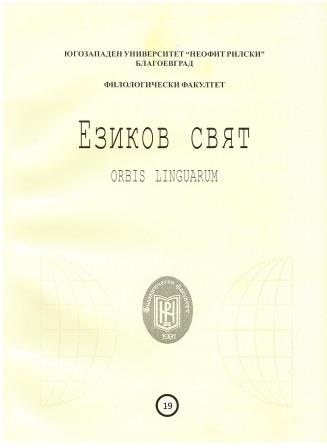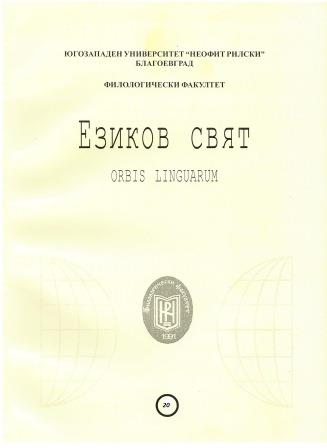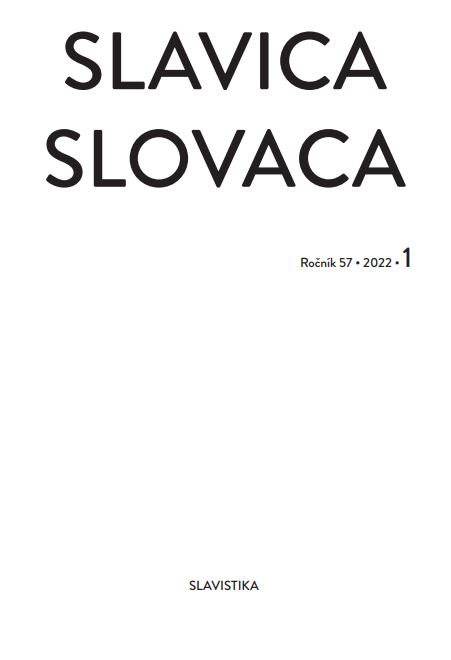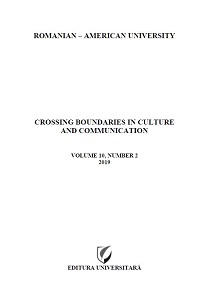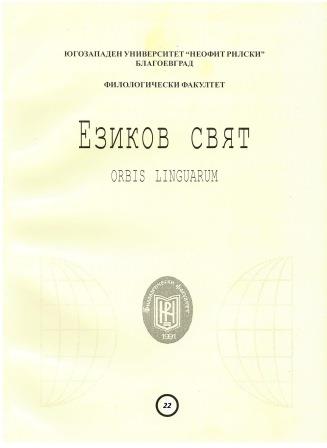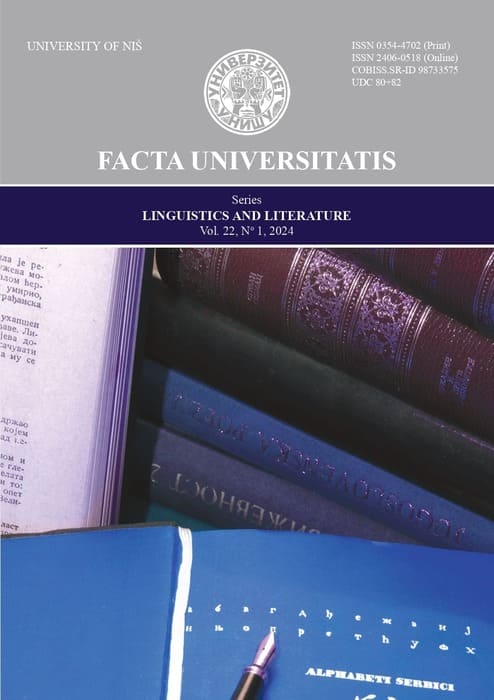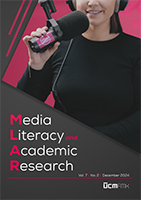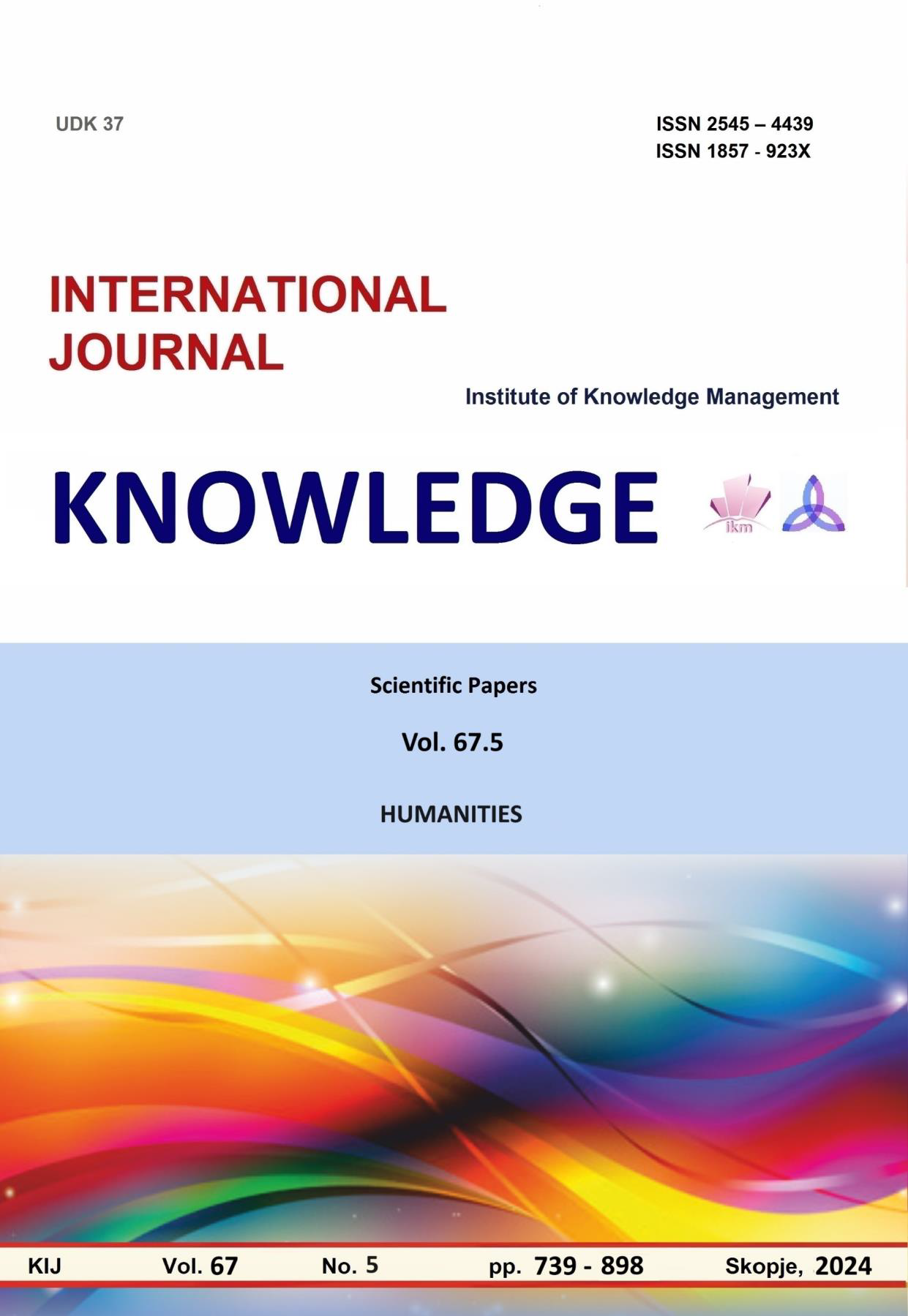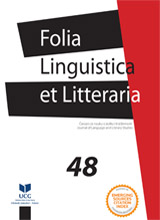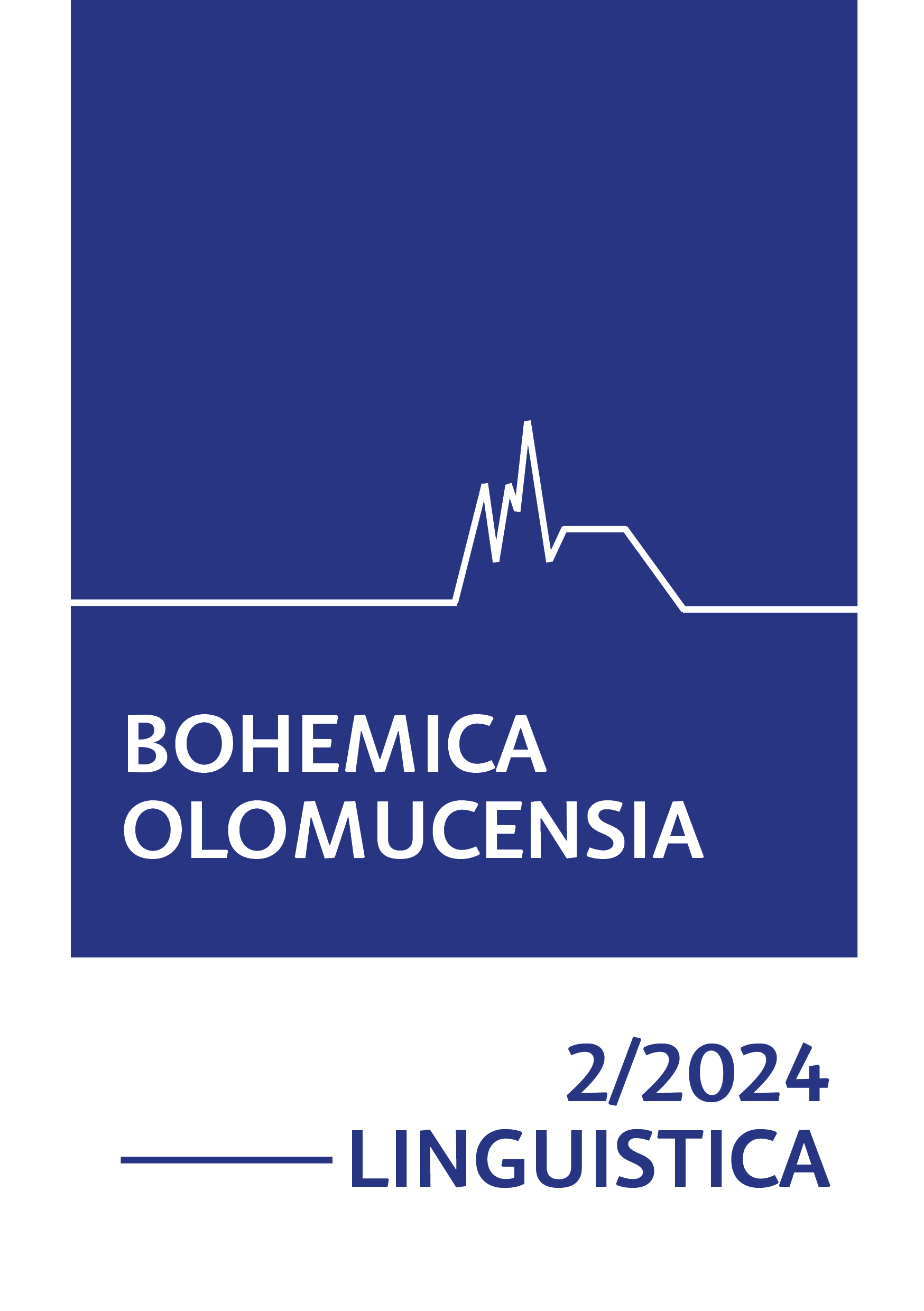Author(s): Anastasiia Lepetiukha,Skovoroda De Kharkiv / Language(s): French
Issue: 48/2024
During the causation of discourse, at the preconstructive stage, the turbulent elements of the mental space are ordered following cognitive polyoperations (psychomechanisms),which ensure the formation of simple (words) and complex (syntagmata and propositions) linguistic signs, potential models systematized in the language, that are actualized in the form of a word, a syntagm or an utterance. Synonymic complex linguistic signs are the secondary transforms of the virtual (linguistic) primary (pivotal) structures (the denotative nucleus) characterized by forms of semantic-morpho-syntactic balance, which are realized as complex linguоdiscursive signs-co(n)textually (linguistically and/or situationally) pertinent preferential options. These actualized constructions with syntactic synonymy represent the reduced, redundant and quantitatively equacomponential (term of the author) with equal quantity of virtual and exteriorized lexical items that are grammaticalized (conventional in language and in discourse) and agrammaticalized (irregular syntactic creations), typical (conventional in discourse and unconventional in language) and atypical (unconventional in language and discourse), including utterances with an insufficiencу of expression from the semantic point of view; that is, those that do not perform the functions inherent in the normative syntactic units (coherence, clarity, and so on) transforms with semantic-morpho-syntactic disbalance. The co(n)textualization of agrammaticalized structures gives them different stylistic effects and new semantic values, in order to facilitate or complicate the identification of both the communicative intention and the ludic strategies of the sender and the interpretation of the information by the receiver. During the transition from language, system of norms, rules and restrictions of the use of such or such linguistic signs, to discourse (mental sayability → effective saying → terminal said), changes take place which are manifested in the formation of non-ludic and ludic structures at all levels of the language, which are actualized in order to transmit information in different co(n)texts. There are two types of means of actualization of linguistic signs: а) “late” means belonging to improvisation (i.e. means of expressiveness); b) "early" means which belong to the instituted (i.e. means of expression). In co(n)textualized preferential options, means of expression prevail over means of expressiveness, or vice versa, depending on the communicative intention of the author. Typical and atypical agrammaticalization is one of the characteristics of the author’s "personalized" idiostyle, where his personal cognitive space predominates over the collective cognitive space. This predomination is manifested in different degrees of discursive freedom of the writer who produces non-normative, non-conventional, asystemic improvised compressed, redundant and quantitatively equacomponential preferential options during the actualization of synonymic syntagmata and propositions. The externalization of typical and atypical agrammaticalized structures, in particular of elliptical constructions with either a sufficiency and insufficiency of expression, is the result of a linguistic game which renders the individual authorial interpretation of objective reality by the addresser. The process of the game requires the coparticipation of the addressee, who uses the strategies of the “alternative” linguistic experiment artificially substituating a word, a syntagm or an utterance of an analyzed discursive formation by a synonymic word, syntagm or utterance. The reader/listener follows two stages of the “alternative” linguistic experiment: 1) The inverse reconstruction (discourse → language) of the primary structure and the transformation of the synonymic chain, the starting point of which is the observation of the co(n)textualized preferential option; 2) The determination of the degree of co(n)textual pertinence of all parts of the virtual synonymic chain, in order to justify the adequacy of the actualized transform in the analyzed discursive fragment. In the context of this research, we proceed to the systemic (linguistic) and functional study of the elliptical constructions of French fiction of the XXth ‒ XXIst centuries, by determining their co(n)textual pertinence and by revealing the idiostylistic peculiarities of the author(s), their ludic strategies and their communicative intentions. Elliptical constructions are defined as preferential options without "functional transposition" (i.e. without grammatical substitution), grammaticalized and typical and atypical agrammaticalized compressed transforms of primary propositions with the implicit nominal or pronominal subject, a final complement or the adverb pas, the explicit, explicit-implicit or completely implicit verbal component where the non-exteriorized segments are deduced by the receiver using the immediate and/or distant co(n)text, extralinguistically or by association. Most of the grammaticalized and typical agrammaticalized elliptical constructions are characterized by the sufficiency of expression according to the idiostyle of the writer and their communicative intention to facilitate the interpretation of the information by the reader, which ensures the success of the “alternative” linguistic experiment. On the other hand, several atypical agrammaticalized elliptical utterances are actualized in the form of preferential options with an insufficiency of expression, in order to complicate for the addressee the identification of the author’s ludic strategies, which makes the inverse reconstruction of the primary structure and the justification of the co(n)textual pertinence of the actualized elliptical preferential option impossible. They distinguish elliptical verbal, nominal, adjectival, adverbial, pronominal, participial, gerundial, numeral and interjectional synonymic constructions (with key lexemes, or "lexical heads", verbs, whether in infinitive or personal form, nouns, adjectives, adverbs, pronouns, present or past participles, gerunds, numerals and interjections) with the initial, median, initial-median, initial-final and final ellipsis. In elliptical verbal synonymic structures, the nominal and pronominal subjects or sometimes partially the verbal element are internalized (in the case of utterances with a predicate in the compound form, a complex predicate, or a combination of two simple predicates). In elliptical infinitive utterances, they observe the non-externalization of impersonal constructions of the type il faut/on doit, which is entirely natural given that the actualized predicate is characterized by processuality or resultativity. The unexpressed subject of the action represents a “demactive” component (being active and passive simultaneously) referentially indetermined (il) or active (on) referentially determined in the co(n)text. During the formation of the primary structure, different types of actants can fulfill the function of the subject; therefore, it is the co(n)textual environment which makes it possible to reconstruct inversely the denotative nucleus. In elliptical constructions containing the personal verb in the negative form, the proclitic ne is implicit, which is specific to spoken language. In synonymic elliptical utterances with a part of the personal predicate not actualized, the existential construction it is or a co(n)textually determined active actant + an auxiliary are internalized. In nominal elliptical utterances, the nominal element cumulates the function of the nomination of an object and the idea of its existence. In discourse, the actualized nominal component serves as a situational support for the implicit existential predication. Most often these are the constructions of the type il y a or c’est/ce sont with demiactive actants whose temporal plan is determined by the co(n)text, or, more rarely, by combinations active subject + predicate that are not exteriorized in nominal elliptical preferential options. In adjectival elliptical preferential options, the actantial and qualifying components are marked in two ways: 1) The actualization of the subject of the action and its qualifier (i.e. elliptical characterizing bicomponential utterances); 2) The exteriorization of a qualifier of an implicit actant (i.e. elliptical characterizing monocomponential utterances). These structures include the existential construction c'est, the verbcopula être or a nonexteriorized combination of subject + predicate. In pronominal utterances, they observe the internalization of the existential constructions c'est or il y a, of the verb-copula être or of а combination of subject + predicate. All the implicit elements are deduced from the co(n)text or extralinguistically. Elliptical utterances with a numeral lexical head contain information on the number-quantity, the number-succession, the number-intensity or the number-index marked by cardinal or ordinal numerals and denumeratives Participial elliptical utterances are realized as characterizing monocomponential preferential options with the initial suppression of the subject of the action + the predicate être (for grammaticalized constructions) within different temporal plans and the actualization of a processual or resultative characteristic of the actant; and as characterizing bicomponential utterances with the median internalization of the verbcopula être. Elliptical gerundial utterances, which are quite rare in modern French fiction, are compressed transformations of causal, temporal, hypothetical, final subordinate primary clauses. In elliptical interjectional utterances, the author exteriorizes the secondary part of speech which acquires a co(n)textual semantic value. Typical agrammaticalized elliptical utterances are ludic transforms of a pivotal structure with sufficiency of expression, unconventional in language and conventional in discourse, actualized by the writer to facilitate the receiver's interpretation of his/her communicative strategies and of the information stated. In the context of this research, four types of these constructions are distinguished: a) Synonymic elliptical structures with the medial internalization of the segment pas or its semantic analogues (point, guère) of the complex negative adverb. During the formation of virtual secondary structures, negation performs the referential function by focusing a new referent. The postposed elements of the complex negative adverb represent the result of the grammaticalization of nouns marking entities (a step, a point, and so on) cognitively close to the human being. Gradually, these linguistic signs lose their lexical value and are incorporated into “a discontinuous morpheme", a functional сomplex including two disjoint elements, ne…pas, point, guère, functioning as a negative morpheme. The preceding element plays the role of a proclitic, that is to say of a segment deprived of semantic value. By studying the semantic differences between constructions containing the two parts of the negation and elliptical utterances with the suppression of pas, the French linguist Guillaume affirms that the negation reduced to ne marks the negative kineticisme (movement) of the thought which does not lead until the end. On the other hand, the negation accompanied by pas belongs to the negative kineticism leading to a conclusion. If we compare Je n’ose le faire and Je n’ose pas le faire, in the first case, it is not a question of a lack of courage but of the feeling of respect for customs which conditions the nonuse of pas; in the second case, it is the lack of will or courage in the face of an obstacle; b) Subordinate utterances сontaining the predicate in the present or past conditional first and second forms, with the median-initial internalization of the subordinating conjunction si + the demonstrative adjective ce and the adverb pas; c) Elliptical preferential options with lexical-syntactic synonymy containing the co(n)textual synonym que of the interrogative pronoun pourquoi and the implicit adverb pas; andd) Elliptical structures with the non-exteriorization of the final complement after the prepositions avec, sans, pour, or contre (and more rarely, parmi or comme). Atypical agrammaticalized elliptical constructions are actualized as ludic transforms of primary propositions unconventional in language and in discourse with sufficiency and insufficiency of expression depending on the communicative intention to facilitate or complicate the interpretation of the co(n)textualized syntactic units by the receiver and of the peculiarities of the author's idiostyle. They distinguish the agrammaticalized atypical elliptical participial structures with the suppression of the verb avoir, the adverbial and the pronominal constructions with the final ellipse. During the analysis of grammaticalized and agrammaticalized elliptical constructions, bi and polysynonymic constructions were identified (compression + redundancy (+ compression/redundancy), compression + compression (+ redundancy/compression), redundancy + redundancy (+ compression/redundancy), quantitative equacomponence + compression/redundancy, and so on with ludic and non-ludic elliptical segments. It was concluded that typical and atypical ludic and non-ludic grammaticalized and agrammaticalized synonymic elliptical utterances and blocks as compressed transformations of primary propositional structures are actualized in order to avoid the reintroduction of referents that are already exteriorized in the pre- or post-text or the syntactic complexification of the immediate or distant co(n)text, to focus on new co(n)textual referents, or to confer on them a new semantic value or different stylistic effects. The analysis of these structures shows that in most cases the elliptical grammaticalized and typical agrammaticalized constructions of French fiction of the XXth ‒ XXIst centuries are characterized by the sufficiency of expression according to the idiostyle of the writer and his communicative intention to facilitate the interpretation of the information by the receiver, which ensures the success of the "alternative" linguistic experiment. On the other hand, several atypical agrammaticalized elliptical utterances are actualized in the form of preferential options with the insufficiency of expression in order to complicate to the reader the interpretation of the utterances and the discursive fragments, which makes the inverse reconstruction of the pivotal structure and the determination of the degree of co(n)textual pertinence of all members of the virtual synonymic chain impossible; that is, it causes the failure of the "alternative" linguistic experiment
More...
